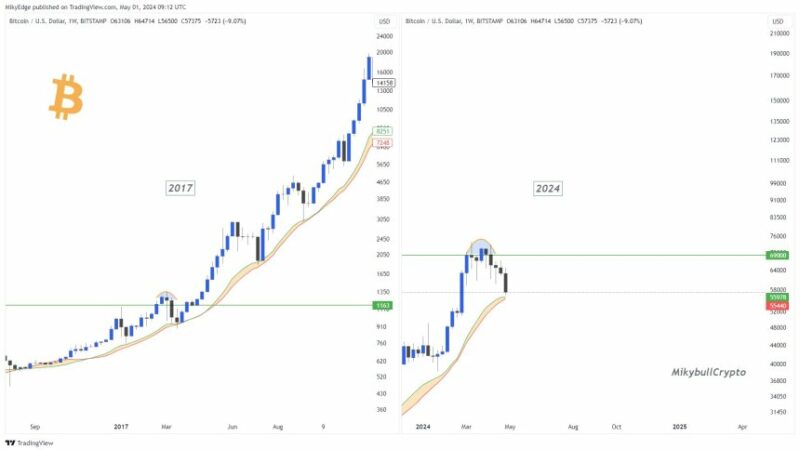Bitcoin’s 2024 Halving Presents New Challenges: A Deep Dive Into the Future of Mining Rewards


As we wrap up the initial six months of 2023, the Bitcoin network inches closer to a significant milestone — the impending block reward halving, which lies just under 300 days ahead. Projections indicate that this event is slated to take place between April 21 and 27, 2024, leading to a substantial reduction of 50% in the earnings of mining participants. Such a development is bound to bring about a significant transformation in the landscape of mining distribution, as miners will witness a substantial decrease in the amount of bitcoin they receive compared to previous cycles.
Balancing Act: Can Bitcoin’s Halving Strike a Sustainable Equation for Miners and Network Security?
In just nine months, the Bitcoin halving will make its presence known, presenting the mining industry with a formidable challenge — a substantial decrease in revenue, particularly if market prices remain stagnant or decline. Typically, the price of bitcoin (BTC) experiences a noteworthy surge roughly six months to a year before the halving event.
In the span of six months, bitcoin (BTC) has already soared by over 80% in 2023. At present, approximately 900 brand new bitcoins enter the market each day (144 blocks), generating a daily sum of around $26 million for miners, alongside transaction fees, based on current exchange rates.
However, in a mere nine months, if prices were to remain within the same range, mining participants would witness a sharp decline, earning a reduced daily amount of $13 million, in addition to fees. Statistics show miner fees have accounted for only a small portion of the revenue earned by bitcoin miners.
According to data from July 7, 2023, fees represented 1.89% of the earnings generated from 144 blocks. In June, bitcoin miners collectively earned $783.76 million in revenue, with block rewards alone (excluding fees) amounting to $745.45 million. In May, miners acquired a total of $919.22 million in revenue, with $793.3 million coming from the block subsidy, according to the data.
The fees collected for May amounted to $125.92 million, a relatively high figure considering fees had not exceeded $20 million per month from December 2021 until March 2023. While fees reached $246 million in April 2021, the increase compared to May was only $121 million. The miners’ highest monthly fee revenue to date was in December 2017, when they earned $297 million.
A low ratio of fees carries several implications for the network’s long-term sustainability as rewards decline with each halving. Some proponents argue that fees must rise to achieve a higher fee-to-rewards ratio to avert potential issues. For instance, as the block reward diminishes, bitcoin miners may grow less incentivized to engage in network participation, particularly if mining costs surpass potential rewards.
Reduced mining participation could result in a decline in hashrate, thereby increasing the network’s susceptibility to potential attacks like a 51% attack. Larger mining operations may be the sole entities capable of sustaining mining activities, potentially concentrating power in the hands of a few. If smaller miners exit the market, there are two potential solutions to compensate for the lack of hashpower: either the price of bitcoin must increase significantly, or the mining difficulty must decrease by the same magnitude.
The 2024 halving will test the theories more than any previous halving. This time, the reward will decrease from 6.25 BTC to 3.125 BTC per block after the halving. Following the halving, the annual inflation on the Bitcoin network will drop from the current 1.7% to 0.84%. If the hashrate declines due to the next halving, block intervals are likely to remain at the average of 10 minutes when the network difficulty adjusts to the lower hashrate.
Whether it’s the 2024 halving or the subsequent one, there is a finite supply of 21 million bitcoins, so the low fee ratio may need to rise to compensate miners. To address these concerns, finding a balance between reducing the block reward and ensuring adequate incentives for miners is crucial for the Bitcoin network. This balance may involve factors such as transaction fees, network scalability, and overall adoption to maintain the network’s long-term sustainability and security.
What are your thoughts on the upcoming Bitcoin halving and its potential impact on miners and the overall sustainability of the network? Share your thoughts and opinions about this subject in the comments section below.

